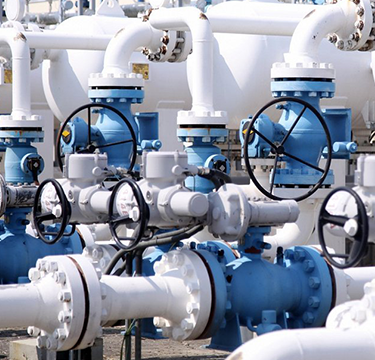Email format error
Email cannot be empty
Email already exists
6-20 characters(letters plus numbers only)
The password is inconsistent
Email format error
Email cannot be empty
Email does not exist
6-20 characters(letters plus numbers only)
The password is inconsistent


Understanding Y-Type Strainer Design Standards: A Comprehensive Guide
When it comes to maintaining the efficiency and longevity of piping systems, the importance of filtration cannot be overstated. One of the most reliable and commonly used filtration devices in various industries is the Y-type strainer. This seemingly simple yet highly effective device plays a critical role in safeguarding equipment and ensuring smooth operations. In this blog, we'll dive deep into the Y-type strainer design standards, exploring its significance, components, and the factors that make it an indispensable tool in industrial settings.
What is a Y-Type Strainer?
A Y-type strainer is a mechanical device used to filter out debris, particles, and other contaminants from fluids in a pipeline. It gets its name from its Y-shaped configuration, where the main pipeline connects to a branch that houses the straining element. This design allows for the easy removal of unwanted particles while maintaining the flow of the fluid with minimal pressure drop.
Why Are Design Standards Important?
The effectiveness of a Y-type strainer largely depends on its design. Adhering to design standards ensures that the strainer can perform its intended function without compromising the overall system. Design standards for Y-type strainers cover various aspects such as material selection, pressure ratings, screen types, and installation guidelines. These standards are crucial for ensuring that the strainer can withstand the operational conditions of the system it’s protecting.
Key Components of a Y-Type Strainer
To better understand the design standards, it's essential to know the key components of a Y-type strainer:
Body: The main housing that contains the strainer element. The body is usually made from durable materials like cast iron, stainless steel, or bronze, depending on the application.
Straining Element: This is the filter screen or mesh that traps the unwanted particles. The size of the mesh can vary, depending on the type of particles being filtered out.
Cover or Cap: The cover provides access to the straining element for cleaning or replacement. It's typically designed for easy removal to facilitate maintenance.
Drain Plug: Located at the bottom of the strainer, the drain plug allows for the removal of accumulated debris without having to disassemble the entire unit.
Material Selection and Pressure Ratings
One of the most critical aspects of Y-type strainer design is the selection of materials. The material must be compatible with the fluid being filtered to prevent corrosion and ensure durability. Common materials include:
- Cast Iron: Ideal for water and non-corrosive fluids, commonly used in HVAC and plumbing systems.
- Stainless Steel: Resistant to corrosion and suitable for a wide range of applications, including chemical processing and food production.
- Bronze: Often used in marine environments due to its resistance to seawater corrosion.
Pressure ratings are another vital consideration. The strainer must be able to withstand the system’s operating pressure without deformation or failure. Design standards typically specify the pressure ratings, which can range from low-pressure applications (e.g., 150 PSI) to high-pressure environments (e.g., 1500 PSI or more).

Strainer Element Types and Mesh Sizes
The straining element is the heart of the Y-type strainer, and its design is critical for effective filtration. There are different types of strainer elements, each suited for specific applications:
Perforated Screens: These screens have punched holes and are suitable for filtering larger particles. They are commonly used in systems where coarse filtration is sufficient.
Wire Mesh Screens: These screens have a finer mesh and are used for trapping smaller particles. The mesh size can vary significantly, depending on the filtration needs.
Wedge Wire Screens: Known for their strength and durability, these screens are used in high-pressure applications where fine filtration is required.
Installation and Maintenance Guidelines
Proper installation is crucial for the efficient operation of a Y-type strainer. Design standards often include guidelines on the correct orientation, placement, and support of the strainer to ensure optimal performance. For example, Y-type strainers should be installed with the strainer element facing downward to allow gravity to assist in the accumulation of debris.
Regular maintenance is also essential to prevent clogging and ensure the longevity of the strainer. The design of the Y-type strainer typically allows for easy access to the straining element, making cleaning and replacement straightforward. However, maintenance frequency depends on the system's operating conditions, such as fluid type and contamination levels.
Applications of Y-Type Strainers
Y-type strainers are versatile and find applications across various industries. Some of the common uses include:
HVAC Systems: To protect pumps, valves, and other equipment from debris in heating, ventilation, and air conditioning systems.
Oil and Gas: To filter out contaminants from crude oil and natural gas before processing.
Water Treatment: To remove solids from water in municipal and industrial treatment plants.
Chemical Processing: To ensure the purity of chemicals by removing impurities during production.
Conclusion
In conclusion, the design standards for Y-type strainers are integral to their effectiveness and reliability in various industrial applications. By adhering to these standards, manufacturers can produce strainers that meet the specific needs of different systems, ensuring optimal performance and protection. Whether used in an HVAC system, a water treatment plant, or an oil refinery, Y-type strainers continue to be an essential component in maintaining the efficiency and longevity of piping systems.
Understanding these design standards not only helps in selecting the right strainer for the job but also in ensuring that it operates correctly over its service life. So, the next time you encounter a Y-type strainer, you’ll appreciate the meticulous design that goes into this vital piece of equipment.

